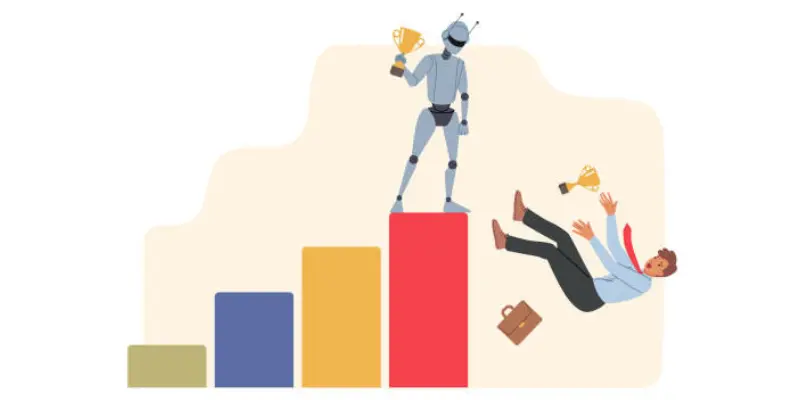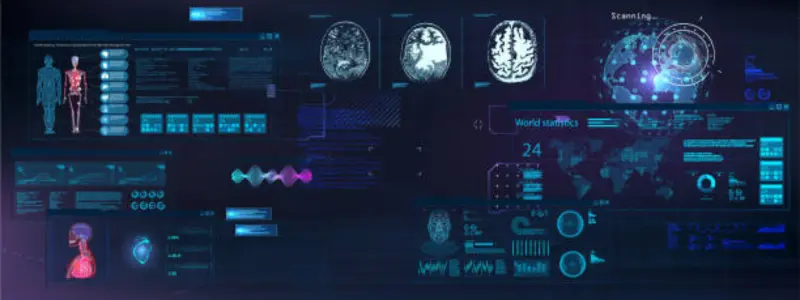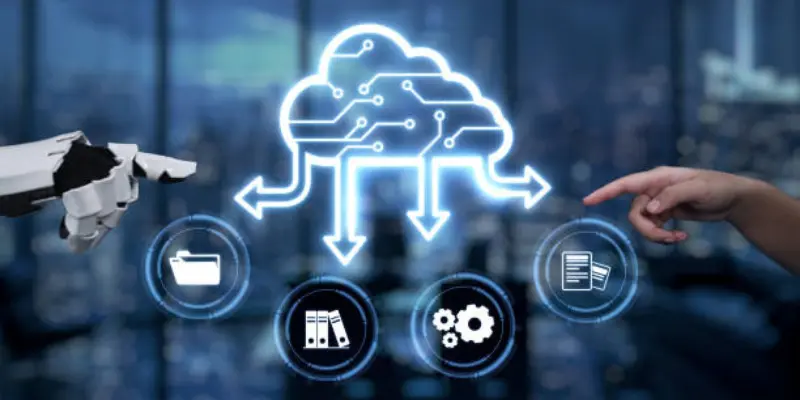AI Outperforms Doctors: A Closer Look at What the Data Really Says
Published: 6 Jun 2025
AI is now outperforming doctors in some areas of medical diagnosis. It can spot diseases faster, catch tiny details and learn from huge amounts of data in seconds. In one real case, an AI system developed by Google Health detected breast cancer in mammograms with greater accuracy than expert radiologists. It even reduced false positives and false negatives, something that can save lives.
“This is not science fiction. AI has real potential to improve diagnostic accuracy and patient outcomes,” said Dr. Dominic King, UK Clinical Lead at Google Health.
In this article, we will explore how AI is beating doctors in certain diagnostic tasks. We will look at real examples, how the technology works and where it still falls short. Let’s see what’s really happening in clinics, labs and hospitals and what it means for the future of healthcare.

What Does “AI Outperforming Doctors” Really Mean?
When we say AI is “outperforming doctors,” what does that really mean? It sounds big but let’s break it down in simple words.
AI outperforms doctors when it does certain medical tasks better, faster or more accurately than expert doctors. That doesn’t mean AI is smarter or more caring. It means that in specific areas like reading medical images or spotting patterns, AI gets better results.
Here’s what AI often does better:
- It works fast. AI can scan thousands of medical images in seconds.
- It sees tiny details. AI can spot small signs of disease that even trained eyes might miss.
- It avoids tiredness. AI doesn’t get sleepy or distracted, no matter how long it works.
But remember this: AI doesn’t work alone. A doctor still checks the results, explains the findings and makes the final decision. AI supports the doctor, it doesn’t replace them.
Quick Comparison: AI vs. Doctor in Diagnosis Tasks
| Feature | AI Systems | Human Doctors |
| Speed | Very fast | Slower |
| Accuracy in imaging | Often higher | High but variable |
| Emotional care | None | Strong |
| Decision-making | Based on data only | Based on knowledge + care |
| Getting tired? | Never | Yes |
In short, AI shines in tasks that involve data, speed and detail. But it still needs a doctor’s mind and heart to deliver real care.
Real-Life Areas Where AI Outperforms Doctors
Let’s get real, AI is not just a buzzword anymore. It’s doing solid work in clinics, labs and hospitals around the world. In fact, some of the biggest breakthroughs in medical AI are already in use today. And in many cases, these tools are not just helping, they are outperforming expert doctors in accuracy, speed and consistency.
Where exactly is this happening? Let’s walk through the real stories.
1. Medical Imaging (X-rays, CT Scans and Mammograms)
Medical imaging is one area where AI is truly making waves. Doctors have used X-rays and CT scans for years to detect problems like tumors, infections or broken bones. But even the best radiologist can get tired or miss something tiny in a complex image.

AI on the other hand can scan thousands of images in seconds. It sees patterns that the human eye might overlook. Plus, it never gets distracted. This makes it a powerful second opinion and in some cases, even a first one.
Real Example:
In a study by Google Health, an AI system reviewed mammograms from women in the U.S. and the U.K. The results were stunning. The AI reduced false positives by 5.7% in the U.S. and 1.2% in the U.K. It also reduced false negatives meaning it caught cancers that some doctors missed. This study was published in Nature in 2020 and shows how AI is raising the bar in breast cancer screening.
2. Skin Cancer Detection
Skin cancer is common but it’s also very treatable, if you catch it early. That’s why checking moles and skin spots is so important. Dermatologists are trained to look for signs of danger. But what if an AI could do it just as well or even better?
AI tools use high quality images to check for skin cancer. They compare thousands of past cases and learn what danger looks like. And unlike doctors, they can work around the clock.
Real Example:
A team at Stanford University trained a deep learning algorithm over 129,000 skin images. Then, they tested it against 21 expert dermatologists. The result? The AI matched the experts in spotting skin cancer including deadly forms like melanoma. This was published in Nature in 2017 and marked a turning point in dermatology AI.
3. Eye Disease Screening
Eye diseases like diabetic retinopathy can cause blindness if not caught early. The problem? Many patients don’t visit an eye specialist until it’s too late. AI is helping by offering fast and easy screening, even in places where doctors are not available.
AI tools can scan the retina (the back of the eye) and spot early damage. This kind of screening can be done in a regular clinic, pharmacy or even a mobile van.
Real Example:
The IDx-DR system was the first autonomous AI tool approved by the U.S. FDA. It detects diabetic retinopathy without needing a doctor to interpret the results. In clinical trials, it showed 87% sensitivity (it found most of the cases) and 90% specificity (it made few false alarms). It’s already used in primary care offices to help save sight before it’s too late.
4. Pathology (Studying Cells and Tissues)
Pathologists study cells under a microscope to find cancer or disease. But this job is hard. A single slide can have millions of cells. Missing just one can lead to the wrong diagnosis.
That’s where AI comes in. It can scan entire slides in seconds and highlight areas that need attention. This helps pathologists focus and reduce errors.
Real Example:
In a study published by JAMA Oncology, researchers tested an AI tool on prostate cancer slides. The AI detected cancer with over 94% accuracy and helped cut down review time. In South Korea, hospitals now use Lunit INSIGHT, an AI tool that checks lung tissue samples and supports diagnosis in real-time. It’s already helping pathologists deliver faster and more accurate results.
How AI Is Able to Do This
You might wonder, how does AI get so good at these medical tasks? What makes it better than humans at spotting tiny details or handling huge amounts of data? Let’s break it down.
1. Learning from Big Data
AI learns by studying lots and lots of medical data. This data includes images, reports.and patient histories. The more data AI sees, the better it gets at recognizing patterns.
Think of it like this: a doctor sees hundreds or thousands of cases in their career. AI can “see” thousands or millions of cases in a short time. This helps AI learn what’s normal and what’s a sign of disease.

2. Using Deep Learning
AI uses a special technique called deep learning. It’s like a digital brain with many layers that work together. This helps AI find hidden patterns in data that humans can’t see.
For example, deep learning lets AI spot tiny spots on an X-ray or subtle changes in skin color that could mean cancer.
3. Working Quickly and Consistently
AI doesn’t get tired or lose focus. It works fast and with the same level of accuracy every time. This means AI can handle large workloads without making careless mistakes.
On the other hand, doctors might get tired after a long day which can lead to errors.
4. Continuous Improvement
AI keeps learning and improving. Every time it reviews new data or cases, it can update itself. This means AI tools get smarter over time, unlike humans who need to spend years studying.
What This Means for Patients and Doctors
AI’s ability to outperform doctors in some areas can feel exciting and a bit worrying. So, what does it really mean for patients and doctors? Let’s break it down.
A. For Patients: Faster, More Accurate Care
AI can help in catching diseases earlier and with fewer mistakes. This means patients can get the right treatment sooner. Faster diagnosis can save lives, especially with serious diseases like cancer.
Also, AI can make healthcare available in places where doctors are few. For example, AI screening tools in remote clinics can spot eye diseases or skin cancer without needing a specialist nearby.
Real-life Tip:
If your doctor uses AI tools, ask how they help with your care. Knowing this can make you feel more confident in your treatment.
B. For Doctors: A Powerful Helper, Not a Replacement
Doctors don’t have to worry about being replaced by AI. Instead, AI works like a smart assistant. It handles repetitive tasks and points out tricky cases for doctors to review.
This lets doctors focus on what they do best talking with patients, making complex decisions and providing care with empathy.
C. Teamwork Between AI and Doctors
The best outcomes come when AI and doctors work together. AI provides fast, accurate data. Doctors use their experience to interpret results and decide on the best care.
This teamwork can reduce errors, lower costs and improve patient trust.
What Doctors Still Do Better
AI has made big leaps in medicine, but doctors still have the edge in many important ways. Machines can analyze data fast but doctors bring heart, judgment and understanding to healthcare. These human qualities are vital for good care.
No matter how smart AI gets, it can’t replace the personal connection between doctors and patients. Doctors use their experience and empathy to guide patients through tough choices and emotional moments.
- Talk to patients with empathy: Doctors listen carefully and show they care. They understand fears and worries and help patients feel comforted and supported. This emotional connection builds trust, something that machines can’t create.
- Make judgment calls in complex or rare cases: Some medical situations don’t follow simple rules. Doctors use their knowledge and intuition to decide the best path when cases are unusual or tricky. AI may not have enough data to help in these moments.
- Handle emotional, ethical or social issues: Doctors help patients face difficult topics like end-of-life care or family concerns. These issues require kindness and thoughtful ethics, something AI cannot offer.
- Coordinate care and answer questions: Medicine often involves many doctors and tests. Doctors guide patients through this process and answer their questions clearly. This helps patients make informed choices that fit their lives.
Limits and Challenges of AI in Diagnosis
AI is powerful but it’s not perfect. It faces real challenges that can affect how well it works in healthcare. Being honest about these limits helps us use AI safely and wisely.
- Needs clean, high-quality data to work well: AI learns from data, so if the data is messy or incomplete, its results can be wrong. Good data is key to accurate diagnoses.
- Can miss things if trained on biased data: If AI trains on data that favors certain groups, it might make mistakes or miss signs in others. This can cause unfair or wrong diagnoses.
- Can’t explain “why” it made a decision: AI often gives answers without clear reasons. This “black box” problem makes it hard for doctors to fully trust AI’s decisions.
- Still needs a human in the loop: AI supports doctors but can’t replace them. Doctors must check AI’s results and make the final call to ensure patient safety.
Conclusion
AI is changing healthcare in amazing ways. It can spot diseases faster and more accurately than ever before. But this doesn’t mean AI replaces doctors. Instead, AI works alongside doctors to make care better for patients.
Doctors bring empathy, experience and judgment that machines can’t match. Together, AI and doctors create a powerful team. This teamwork helps patients get faster diagnoses, better treatment and care with a human touch.
So, the next time you hear “AI outperforms doctors,” remember it’s about using technology to help doctors, not replace them. The future of medicine is a blend of smart machines and caring humans working side by side.
Related Queries
Here are frequently asked questions about AI outperforming Doctors in Healthcare:
AI diagnostic tools can be expensive to develop and implement initially. However, they often reduce long-term costs by catching diseases earlier and reducing the need for repeat tests. Most patients won’t pay extra fees since AI tools are typically built into existing medical equipment and services.
AI systems are designed to work with doctors not replace them, so a human doctor always reviews the results. If an error occurs, the same medical malpractice and insurance systems that protect patients from doctor errors also apply. The goal is that AI plus doctors together make fewer mistakes than either would alone.
Medical AI systems must follow the same strict privacy laws like HIPAA that protect all your health information. Your personal data is typically encrypted and anonymized before being processed. Reputable AI systems are designed with strong security measures to prevent data breaches.
Doctors should inform you if they are using AI tools as part of your diagnosis or treatment. You can always ask your healthcare provider about what technologies they use. While you may have the right to refuse certain AI-assisted procedures but this could limit your treatment options in some cases.
Actually, AI might make second opinions easier and faster to obtain. Different AI systems can quickly analyze the same data and provide additional perspectives. You can still seek human second opinions and AI tools might help other doctors review your case more efficiently.
AI is particularly valuable in underserved areas because it can provide expert level analysis where specialists aren’t available. Telemedicine allows remote doctors to supervise AI results from a distance. Some AI systems are designed to work with minimal supervision for basic screening tasks.
AI can analyze most medical images and data within seconds to minutes. However, the total time for results depends on when a doctor reviews the AI’s findings and communicates with you. Overall, AI typically speeds up the diagnostic process compared to traditional methods.
Many AI tools can work with existing medical equipment and computers. Some require software updates or new computer systems but don’t always need entirely new machines. The integration process varies depending on the specific AI tool and hospital’s current technology.
You have the same rights as with any medical diagnosis and you can seek second opinions, ask questions and request additional tests. Remember that a human doctor makes the final diagnosis decision not the AI. You can discuss your concerns with your doctor and explore other diagnostic options.
AI currently struggles with rare diseases, complex cases involving multiple conditions and situations requiring significant medical judgment. Mental health conditions and cases where patient history and context are crucial also remain challenging for AI. These areas still rely heavily on human medical expertise.





